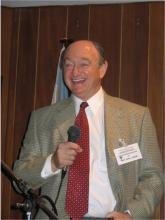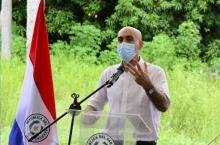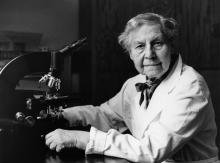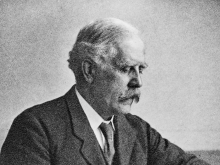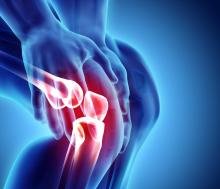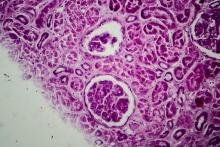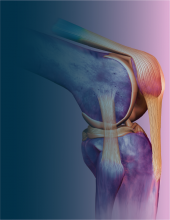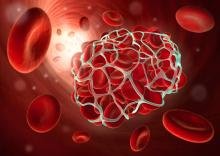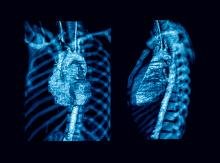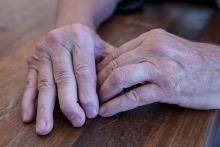Memorial of Epidemics
Fernando Neubarth MD
She was still a girl and in the house where she served, a family of rural people where there were relationships dating back to the time of her grandparents and slavery, sent her to the vicinity of Rua da Praia to pick up orders from a dressmaker, news dresses of her employer and other clothing repairs. It was on the way, already close to her destination, that she experienced her first epileptic seizure. No one helped her and lying on the road, unconscious, she was mistaken for one of the victims of the flu and woke up, already in Azenha, among a pile of bodies on a cart that started the steep hill of the cemetery.
A mischievous smile and illuminated by the gleam of eyes that were once dull and veiled with cataracts, served as a closing to the story that still amused us with details of the scare that the cart driver also had. An improvised funeral director, who after the surprise had enveloped her in a welcoming embrace and who, by these machinations of fate, would be her life companion. For decades, until death, this time with determination, took him away.
About the Spanish Flu, I transcribe excerpts from the description of our greatest memoirist, Pedro Nava (1903-1984), a rheumatologist, one of the forerunners of the specialty in Brazil, having also been president of the Brazilian Society of Rheumatology and of the Panamerican League of Rheumatology Associations – the PANLAR. In the book Chão de Ferro, published in 1976, Nava describes with mastery and rare erudition personal memories of the pandemic that arrived in Brazil in 1918.
[...] “Medical literature is full of descriptions of epidemic outbreaks, some of which took on a pandemic aspect, ravaging all large human agglomerations, such as that of 1733, which marks the first oceanic passage of the same epidemic spread from Europe to America; those of 1837, 1847, 1889 and finally that of 1918 that swept the world, causing more deaths than the First World War. […] No, her parents were not the European Conflagration and Emperor William II. It was born of the influence, of this imprecise thing, despised by the moderns but nevertheless existing that are the telluric, seasonal and atmospheric coincidences responsible for the so-called medical constitution of certain diseases in time the constitutio of the classics [...] that appears in several passages of Hippocrates expressing the vicissitudes of air, places, seasons and their responsibility in the genesis of diseases. Because the synoco of phlegm, influenza, flu or whatever you want to call it, the Spanish settled among us in September and grew at the end of that month and in the first of the following”.
[...] “Synochus catarrhalis was the name of an epidemic disease, clinically individualized since ancient times and that periodically, with increasing extension, ravages humanity. This extension is related to the ever-increasing speed of communications. Its contagion has already traveled on foot, at the pace of a horse, at the speed of an iron train, by ship and, nowadays, it uses supersonic planes, spreading across the world in two, three, four days. When he passed through Italy (in the 1802 epidemic that so severely punished Venice and Milan), he received the name that made him a fortune: influenza. The term caught on, passed into everyday language and I remember hearing it used by my maternal grandmother, in Juiz de Fora [...]. The name flu comes from the middle of the last century and was first used by Sauvages, from Montpellier, taking into account the tense, contracted, creased, crumpled look – grippé – that he thought he saw on the faces of his patients”.
[...] “The disease broke out here in September, because at the end of that month and beginning of October, the measures of the authorities opened the eyes of the people and this explained certain anomalies that had been observed in urban life: rare traffic, empty city half-dead, entertainment halls not full, driving always easy, the regattas, water polo and football matches with almost no assistants, Derby and Jockey races with fans reduced to a third […]. I started to feel it on a Monday in mid-October when, returning to school, I found only eleven students in our third year of forty-six. Thirty-five colleagues had come down with the flu from Saturday to the first day of the following week. We arrived at the school at 9 am. By midday, of the healthy people who had entered, about ten were already shivering in the Infirmary”.
[...] “It became a calamity of unknown proportions in our epidemiological annals in the terrible days of the second half of October and its morbidity and mortality only decreased in the still tragic first week of November [...]. Depending on the conditions of the terrain, according to the resistance of the individuals or the point d'appel of its weakest zone, the influenza was thus benign, or assumed the physiognomies that were called pneumonic, bronchopneumonic, gastroenteric, choleriform, neuralgic, polyneuritic, meningitic, meningoencephalic, renal, asthenic, syncopal and fulminant. It was terrifying how quickly she went from invasion to apogee, in a few hours, leading the victim to suffocation, diarrhea, excruciating pain, lethargy, coma, uremia, syncope and death in a few hours or a few days. . The speed of the contagion and the number of people being affected was terrifying. None of our calamities had come close to the reigning disease.”
[...] “The terrible thing was no longer the number of causalities but that there was no one to manufacture coffins, to take them to the cemetery, to dig graves and bury the dead. The astonishing thing was no longer the number of sick people, but the fact that almost all of them were sick and unable to help, treat, transport food, sell food, fill recipes, in short, perform the essential tasks for collective life. As in the calamity in Paris, in 1889, when the flu had thrown two-thirds of the population to bed, in Rio the disease surpassed itself and dropped, in a great hideous gala, four-fifths of Cariocas on the floor, on the bed or on the hospital pallet. It was up to the remaining twenty percent, whether convalescent or healthy, to hold on to the city that was teetering on the brink of collapse […]. In addition to hunger, lack of medicine, of doctors, of everything, the sheets reported the never-before-seen number of sick people and dreadful figures in the obituary. The funeral parlors did not provide an outlet, there was a lack of coffins. Even wood to make them, to the point where a carpenter from the suburbs would take orders by making the envelopes with boards from the ceiling and floor of his house”.
[...] “When there were coffins, there was no one to transport them and they would go to the cemetery by hand, by donkey without a tail, dragged or crossed in taxis. In the end the bodies went in trucks, mixed with each other […]. There was an exchange of rotten corpses for fresher ones, each one wanting to get rid of the loved one that was beginning to swell, to stink. At the height of the epidemic, on a day when there was no way to transport so many dead people, the Chief of Police was already despairing when the solution came from Jamanta, the famous reveler of Rio's Carnival. […] He knew, admirably, his Rio de Janeiro and by one of those bohemian whims, he had learned in night marches, to drive trams. He asked and obtained a luggage rack from his superiors and searched the city with them from north to south […]. Tram and trailers full of coffins piled up and shrouded in sheets, the solitary driver drove to the (cemetery of) Caju. He unloaded. It was already late in the day, but he would come back and scavenge Laranjeiras, Flamengo, Botafogo, Jardim Botânico, Ipanema, Copacabana, picking up more dead bodies. He packed. At night, the sinister composition passed like the Ghost Train or Dracula's ship clogged with cargo to (cemetery) São João Batista. He did this for two or three days that will forever mark his memory.”
Referring to Nava's accounts, he would say that my patient was lucky after all. She can even benefit from the advances that science has provided in the treatment of epilepsy, a disease with which she lived well and which, in a somewhat capricious way, made her know love in the Spanish times. Due to her age, she did not reach the many scenes that the covid-19 made to repeat, with atrocious similarity, in days that are still present and dark and that will be indelible in our memory as survivors.











































